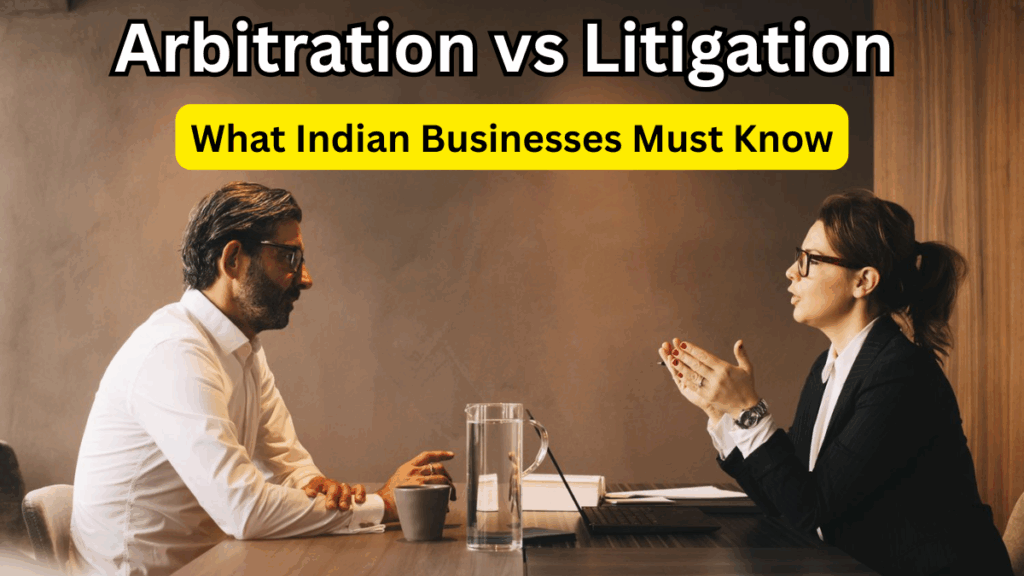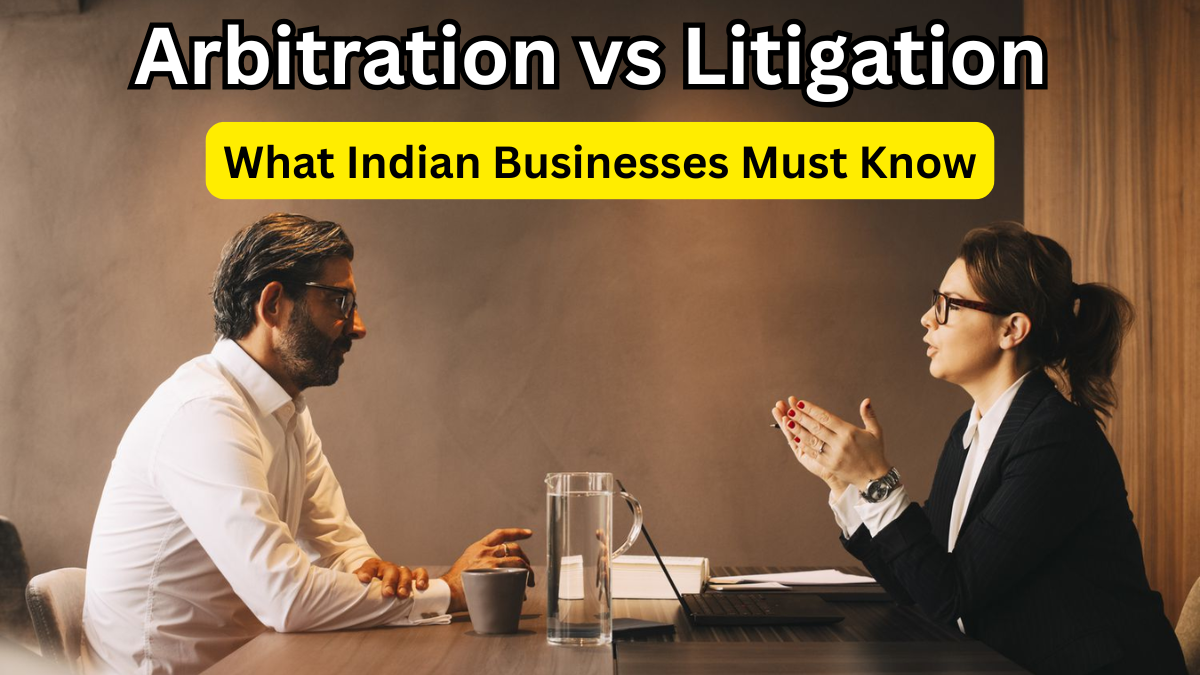As India’s business landscape modernizes, resolving disputes swiftly and cost-effectively is more important than ever. Whether you’re a startup founder or managing a large enterprise, knowing the key differences between arbitration vs litigation in 2025 can protect your operations, finances, and reputation. Legal reforms, updated rules, and digital court systems have changed the game—but how do you decide what’s best?
Let’s explore what Indian businesses need to know right now.

Why Dispute Resolution Matters for Businesses
Legal conflicts, if not handled well, can drain resources and slow growth. Choosing the right path for resolution affects:
-
Legal cost & time
-
Customer and investor confidence
-
Business continuity
-
Brand image and trust
This is where the debate of arbitration vs litigation becomes relevant.
Arbitration vs Litigation: What’s the Difference?
Here’s a simple side-by-side comparison to understand how the two differ in 2025:
| Feature | Arbitration | Litigation |
|---|---|---|
| Process Type | Private & informal | Public & formal |
| Decision Maker | Appointed arbitrator(s) | Judge (government-appointed) |
| Speed | Generally faster | Usually slower |
| Cost | Can be high, but predictable | Varies; can be very high |
| Appeal Possibility | Limited or none | Allowed through court hierarchy |
| Confidentiality | High – proceedings are private | Low – cases are public |
| Enforceability | Strong, even internationally | Mostly within domestic legal system |
Why Arbitration Is Gaining Popularity in 2025
Indian businesses, especially in tech and finance, are opting for arbitration more than ever. Here’s why:
-
Speed and Flexibility: Arbitrations avoid procedural delays.
-
Controlled Legal Cost & Time: Cost may be higher upfront, but the process is more efficient overall.
-
Privacy Protection: Essential for sensitive information and business reputation.
-
Expert Arbitrators: Parties can choose experts familiar with their industry.
Where Litigation Still Has an Edge
Despite arbitration’s advantages, litigation remains important in specific scenarios:
-
Criminal or regulatory disputes
-
Issues requiring legal precedent
-
Consumer protection and public interest cases
The major drawback is the legal cost & time involved. Even in 2025, despite improvements, litigation timelines remain lengthy.
When Should Businesses Choose Arbitration or Litigation?
The best method depends on factors like:
-
Nature and complexity of the dispute
-
Confidentiality needs
-
Jurisdictional requirements
-
Desired speed of resolution
Quick Decision Matrix
| Scenario | Best Option |
|---|---|
| Cross-border trade conflict | Arbitration |
| Employee termination dispute | Litigation |
| Intellectual property rights violation | Litigation |
| Delayed vendor payments | Arbitration |
| Family-owned business disputes | Arbitration |
FAQs
What makes arbitration faster than litigation?
Arbitration skips the formal court process, has fewer procedural steps, and allows parties to set deadlines—making it faster.
Which one is more affordable?
Although arbitration may require upfront fees, it often saves time and prevents drawn-out proceedings—making it cost-effective in terms of total legal cost & time.
Is an arbitration award final?
Yes, most arbitration awards are final with limited grounds for appeal, making outcomes more predictable and enforceable.
How can businesses prepare for arbitration?
Include a robust arbitration clause in your contracts, stating the venue, rules (like ICADR or SIAC), number of arbitrators, and governing law.
Conclusion
In 2025, the choice between arbitration vs litigation isn’t one-size-fits-all. Arbitration offers speed, flexibility, and confidentiality, while litigation is still vital in certain legal matters. For Indian businesses conscious of legal cost & time, smart contract drafting and early dispute planning are key to staying ahead.
Choosing the right dispute resolution strategy today ensures smoother business operations tomorrow.
Click here to learn more
